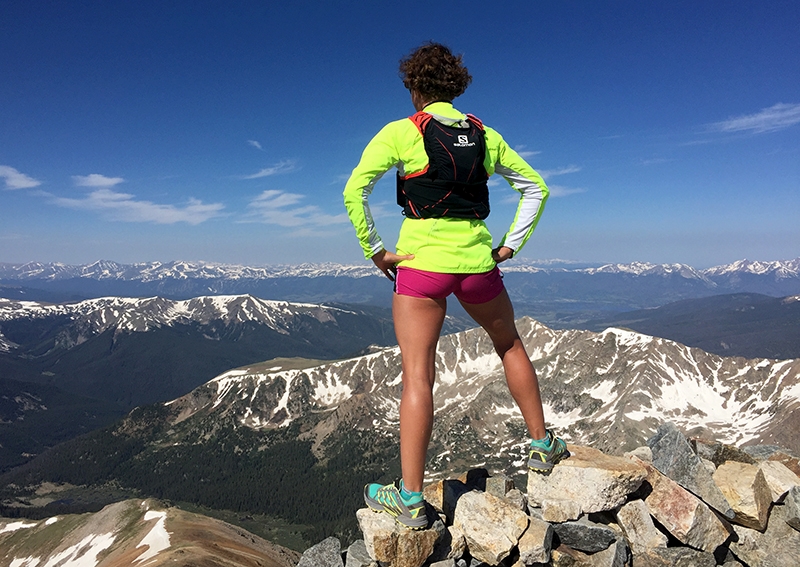Training for mountain hiking involves targeted physical conditioning and acquiring essential skills. Preparation includes strength training, cardio exercises, and learning safety protocols.
Before embarking on a mountain hiking adventure, it’s crucial to engage in a comprehensive training regimen tailored to meet the unique demands of the activity. This preparation does more than just enhance your endurance; it equips you with the ability to tackle various terrains and elevations, ensuring a safer and more enjoyable hike.
Emphasizing leg strength and cardiovascular fitness is key, as these are the primary muscle groups and systems used during a hike. Learning navigation methods and familiarizing yourself with the necessary gear can make a significant difference in your mountain hiking experience. Balancing your workouts with hiking-specific drills while incorporating flexibility and balance training will help you efficiently conquer the challenging inclines and unpredictable conditions of the mountain trails. Successful training, coupled with a comprehensive understanding of hiking safety, turns daunting mountains into accessible adventures.
Gear Up For The Climb
Imagine scaling a mountain with ease and confidence. That thrill starts with the right gear. Your equipment is your lifeline on the trails. Secure it, and you secure your adventure.
Essential Equipment
Preparation is crucial for mountain hiking. Each item you carry serves a purpose. For a safe and enjoyable hike, your backpack should include:
- A map and compass – always know your location
- High-energy snacks – for fuel during the climb
- First-aid kit – be ready for any scrapes or sprains
- Extra clothing – to face changing weather conditions
- A flashlight or headlamp – darkness won’t stop your ascent
- Match or lighter – to start a fire if you need warmth
Choosing The Right Footwear
Selecting the proper footwear is vital. Your boots are the foundation of every step. Here’s how to pick the best pair:
| Feature | Importance |
|---|---|
| Fit | |
| Comfort | Prevent blisters and discomfort |
| Grip | Maintain traction on rough terrain |
| Durability | Withstand the rigors of the hike |
| Support | Protect ankles against twists and sprains |
| Water resistance | Keep feet dry in wet conditions |
Always try on different sizes and walk around to feel their comfort. Give your feet the respect they deserve. They will carry you to the peak.

Credit: www.shutterstock.com
Physical Preparation
Before you hit the trails, your body needs proper tuning. Let’s gear up for those steep climbs and breathtaking descents.
Cardiovascular Conditioning
Boosting your heart health is key for mountain hikes. High altitudes demand strong lungs and a robust heart. Aim to include cardio sessions three to five times a week. Activities like jogging, cycling, or swimming build endurance. Integrate hill repeats into your runs to mimic hiking inclines.
- Jog for 30 minutes to an hour
- Swim for a consistent heart rate increase
- Cycle on varied terrains
Strength Training
Mountain hikes challenge your whole body. Focus on the legs, core, and back muscles. Squats, lunges, and deadlifts create powerful legs. Planks and sit-ups strengthen the core, while rows and pull-ups boost back strength.
| Exercise | Sets | Reps |
|---|---|---|
| Squats | 3 | 12 |
| Lunges | 2 | 10 each leg |
| Deadlifts | 3 | 10 |
Flexibility And Balance
Rough trails need agile hikers. Yoga and stretching improve flexibility. Balance exercises like standing on one leg or using a balance board prevent falls. Practice daily for best results.
- Stretch after workouts
- Hold yoga poses for balance
- Challenge balance with a Bosu ball
Altitude Acclimatization
Soaring high into the clouds, mountain hiking brings with it the thrill of adventure and stunning vistas. But as altitude increases, so does the challenge your body faces. Altitude acclimatization is crucial for mountaineers. It helps your body adjust to thin air on high peaks. Let’s explore how to tackle altitude to enjoy the heights safely.
Understanding Altitude Sickness
Altitude sickness strikes when you ascend too quickly. The air thins and your body struggles for oxygen. Symptoms might include headaches, nausea, and dizziness. Without care, it can turn severe. To stay safe, know the signs and act early.
- Headache: A common first warning
- Nausea: Feeling sick in your stomach
- Difficulty breathing: Short breaths at rest
- Lack of energy: Feeling unusually tired
Pre-climb Acclimatization Strategies
Proper preparation can reduce risks. Start with gradual altitude increases. Spend a few days at mid-altitudes before the peak. Here are strategies:
- Climb High, Sleep Low: Day hikes to higher altitudes aid acclimatization while sleeping at lower heights aids recovery.
- Stay Hydrated: Drink plenty of fluids to help your body adjust.
- Slow Pace: Ascend slowly, let your body catch up.
- Rest Days: Incorporate rest days into your schedule for your body to adapt.
- Altitude Drugs: Consult a doctor about medicines that can assist in acclimatization.
| Strategy | Description | Benefits |
|---|---|---|
| Gradual Ascent | Take routes that rise slowly. | Reduces sickness risk. |
| Hydration | Consume fluids regularly. | Prevents dehydration. |
| Avoid Alcohol | Limit alcohol before hikes. | Alcohol can worsen symptoms. |
Credit: www.instagram.com
Nutrition And Hydration
Mountain hiking demands energy, stamina, and resilience. Proper nutrition and hydration are key to powering through challenging trails. What you eat and drink before, during, and after your hike can greatly affect your performance and recovery. Let’s explore the best practices for a balanced diet and staying hydrated on the trail.
Balanced Diet For Hikers
A balanced diet fuels your body for the demands of hiking. It provides the necessary nutrients to keep your energy levels high and supports muscle repair.
- Carbohydrates: They are your main energy source.
- Proteins: They help repair and build tissues.
- Fats: They are essential for long-lasting energy.
- Vitamins and Minerals: These are crucial for preventing cramps and supporting overall health.
Fruits, vegetables, whole grains, nuts, and lean meats are all great choices. Consider these examples:
| Food Group | Examples |
|---|---|
| Carbohydrates | Oatmeal, Brown rice, Quinoa |
| Proteins | Chicken, Tofu, Almonds |
| Fats | Avocado, Olive oil, Nuts |
Staying Hydrated On The Trail
Staying hydrated is critical for your hiking performance. Your body loses water through sweat and breathing, especially at higher elevations. To prevent dehydration, follow these simple steps:
- Drink water regularly, don’t wait until you’re thirsty.
- Consider electrolyte solutions for longer hikes.
Light yellow means you are well-hydrated, and dark yellow indicates dehydration. Water is the best choice, but herbal teas or coconut water are good alternatives.
Navigational Skills And Safety
Navigational Skills and Safety:
Essential for every hiker, navigational skills ensure you can find your
way through the wilderness. Safety depends on your ability to use these
tools. Let’s gear up our navigational knowledge and safety measures for
mountain hiking.
Map And Compass Basics
Trekking through mountains requires more than instinct.
A reliable map and a compass are your best friends in the
vast outdoors.
- Read topographic maps: Understand contour lines,
terrain features, and scale. - Magnetic declination: Competence in adjusting for
local variances between true north and magnetic north. - Triangulation: Pinpoint your location using multiple
landmarks.
Practice these skills in a controlled environment before your hike.
Confidence with a map and compass could save your life.
Emergency Preparedness
A sudden turn in weather or a misstep can lead to an emergency.
Preparedness is key to survival.
| Item | Purpose | Notes |
|---|---|---|
| Whistle | Signal for help | Pealess whistles work in all conditions |
| First-Aid Kit | Treat injuries | Check contents regularly |
| Emergency Shelter | Protection from elements | Lightweight bivy or space blanket |
| Fire Starter and Matches | Warmth and cooking | Store in a waterproof container |
Learn and practice survival techniques: Fire-making,
emergency signaling and shelter-building are vital. Include a personal
locator beacon (PLB) in your gear. Ensure to inform someone about your
itinerary and expected return time.

Credit: www.facebook.com
Mental Fortitude And Mindset
Mountain hiking is not just a physical endeavor. Your mind plays a
pivotal role in conquering peaks. Preparing your psyche is as crucial as conditioning your body.
A robust mental fortitude and the right mindset are the secrets to success.
Overcoming Psychological Challenges
The path to the summit is lined with challenges beyond the physical.
From relentless weather to the solitude of the mountains, hikers face plenty of psychological hurdles.
Building mental resilience is a must. Here’s how to strengthen your mental game:
- Set realistic goals: Break your hike into manageable sections.
- Visualize success: Imagine reaching the top and how it feels.
- Prepare for setbacks: Understand that obstacles are part of the journey.
Staying Motivated During Hardships
Hardships on the trail are inevitable. Staying motivated is key to pushing forward.
Your inner voice can be your best ally or worst enemy. Keep it positive with these strategies:
| Strategy | Benefit |
|---|---|
| Encouraging self-talk | Boosts confidence and reduces negative thoughts. |
| Remembering your ‘why’ | Recall your reasons for taking on the hike. |
| Rewarding progress | Small rewards can help maintain enthusiasm. |
| Staying connected | Reach out to loved ones for emotional support. |
Frequently Asked Questions For Training For Mountain Hiking
How Do You Get Fit For Hiking Mountains?
To get fit for mountain hiking, gradually increase cardio workouts, practice hill walking, and strengthen leg muscles with exercises like squats and lunges. Incorporate core workouts for balance, and consider endurance training.
How Do You Get In Shape For Uphill Hiking?
To get in shape for uphill hiking, engage in regular cardio exercises like running or cycling. Strengthen leg muscles with squats and lunges. Practice on inclines using a treadmill or outdoor hills. Incorporate core workouts for balance and stability. Consistently hike varied terrain to build endurance.
How Can I Improve My Mountain Hiking?
Train regularly to build endurance and strength. Choose appropriate gear for safety and comfort. Study the trail and weather conditions. Hike frequently to gain experience. Take a navigation and first aid course to enhance your skills.
How Do I Increase My Stamina For Hiking?
To boost your hiking stamina, gradually increase your walking distances. Include varied terrain in your training. Perform cardiovascular exercises like running or cycling. Strengthen leg muscles with squats and lunges. Prioritize consistent, weekly workouts to build endurance.
Conclusion
Embarking on mountain trails requires proper preparation and a focused training regimen. Ensuring your body is ready can make all the difference on your hike. Start with targeted workouts, embrace the right nutrition, and practice with smaller treks. Gear up and let the journey to peak fitness begin—your mountain adventure awaits!

